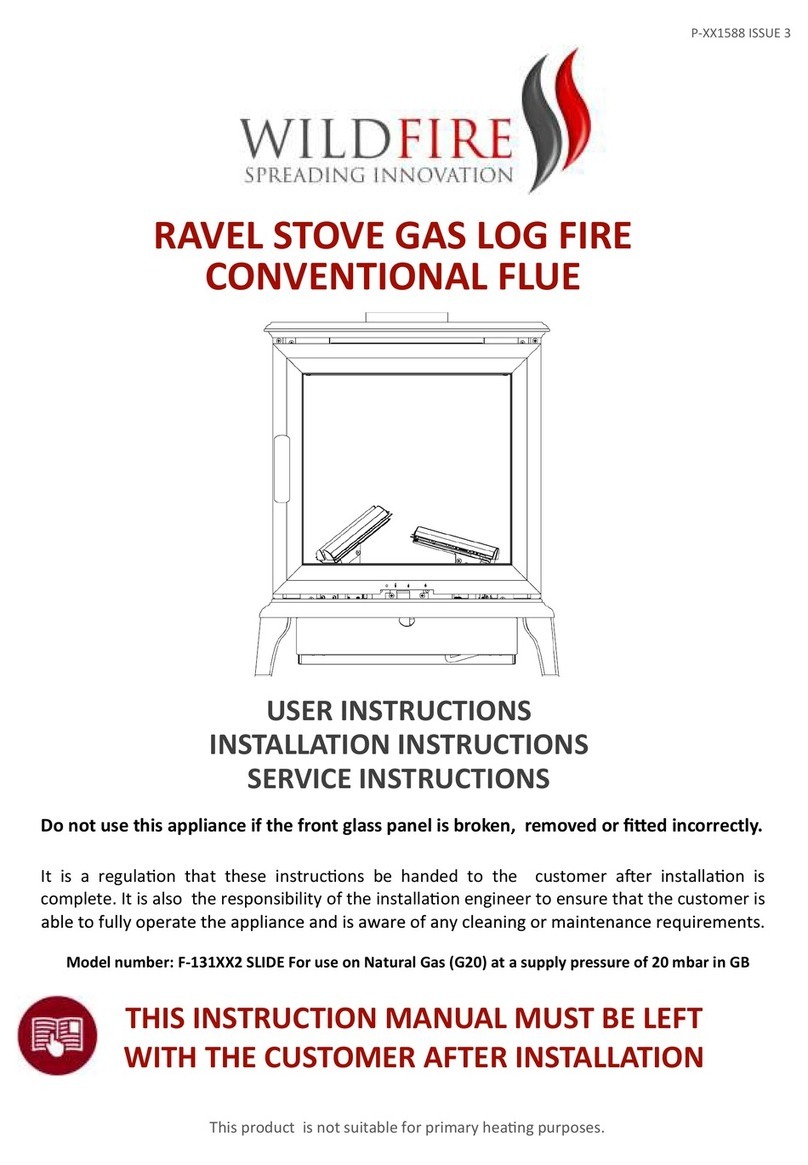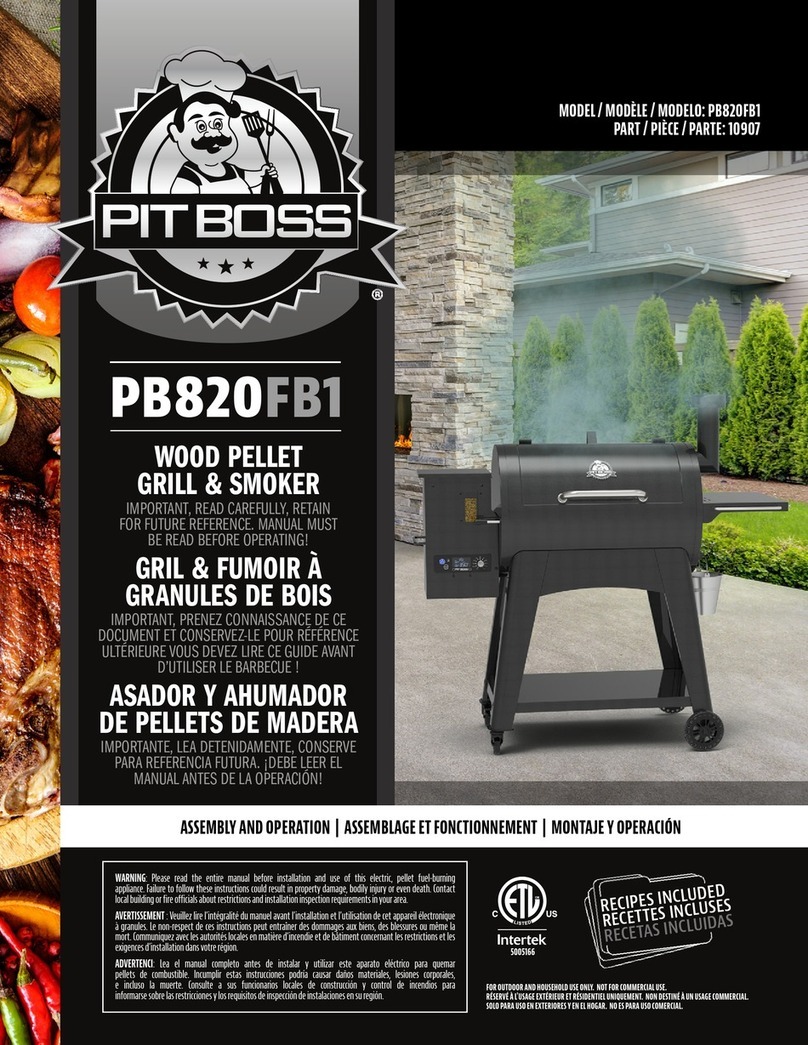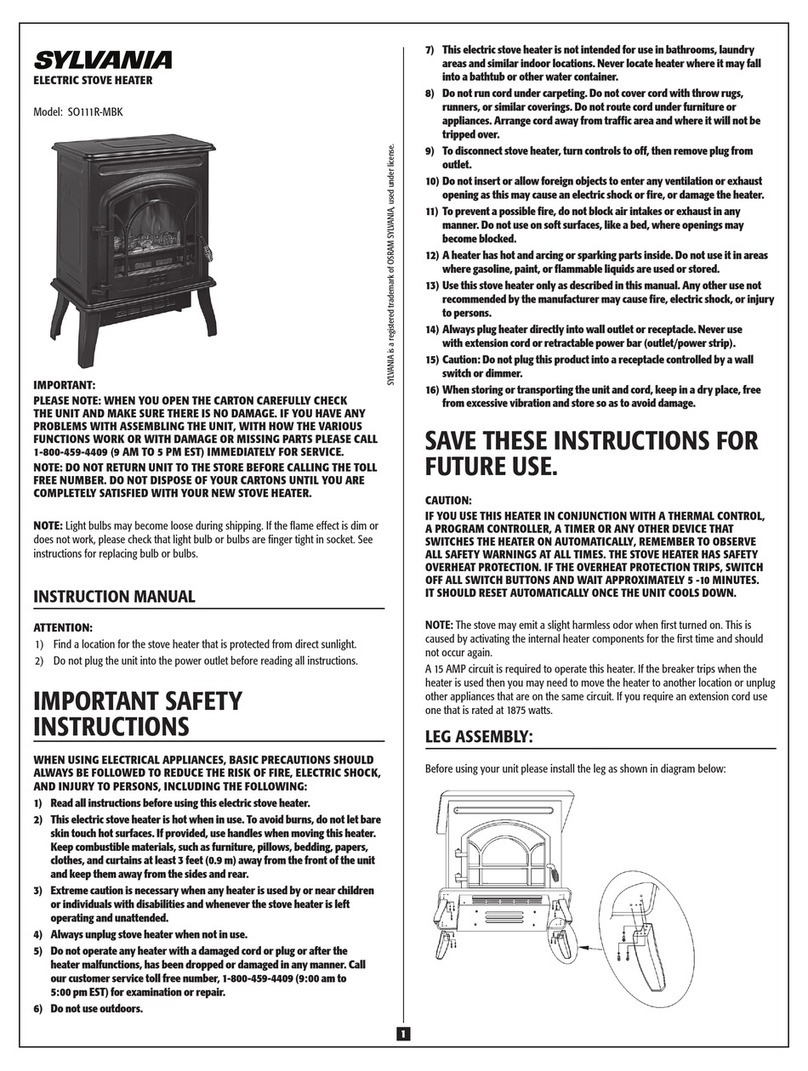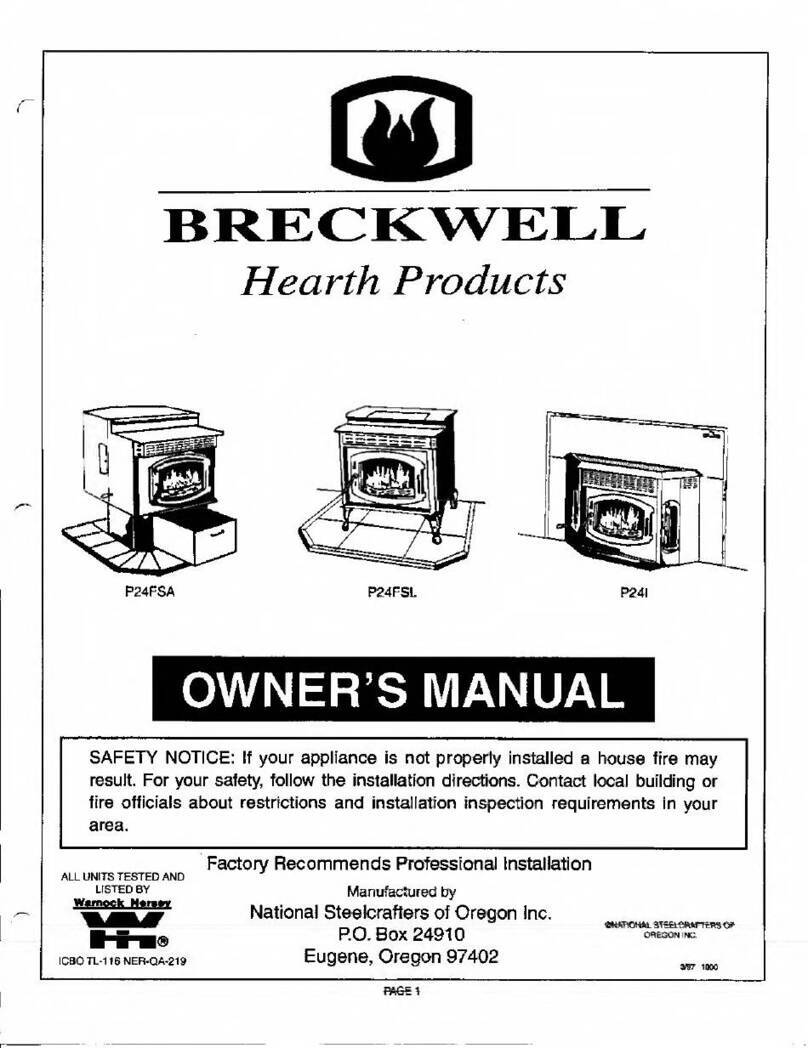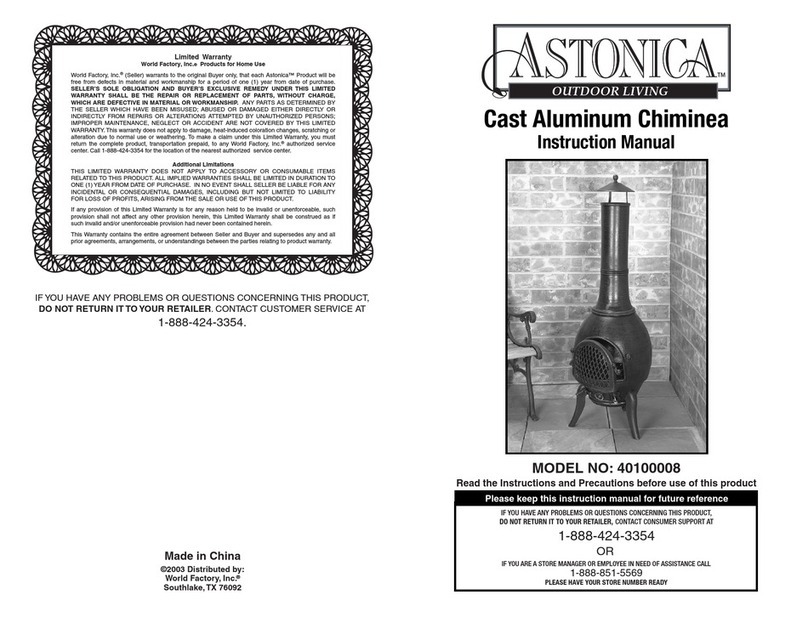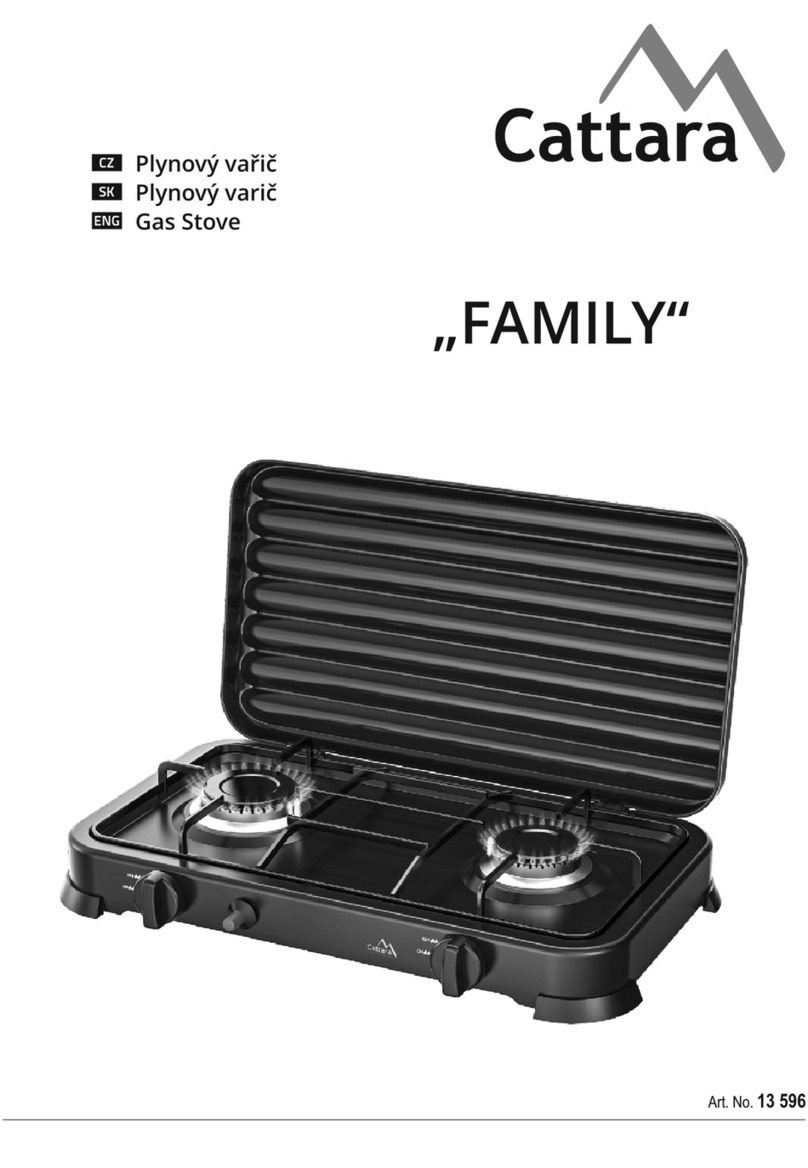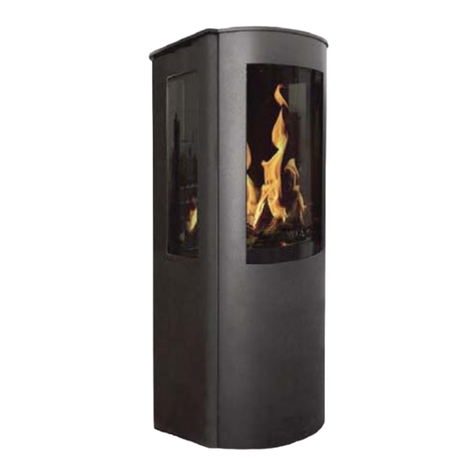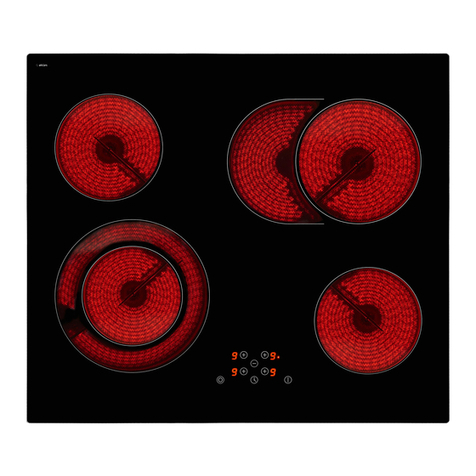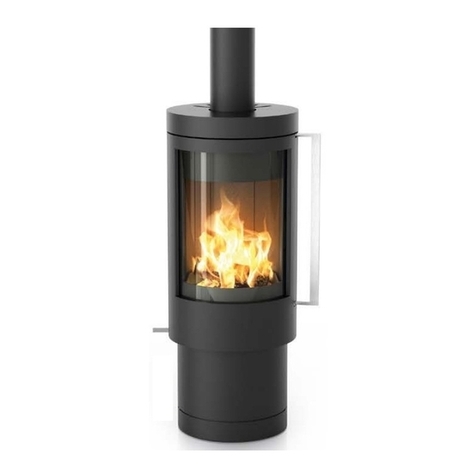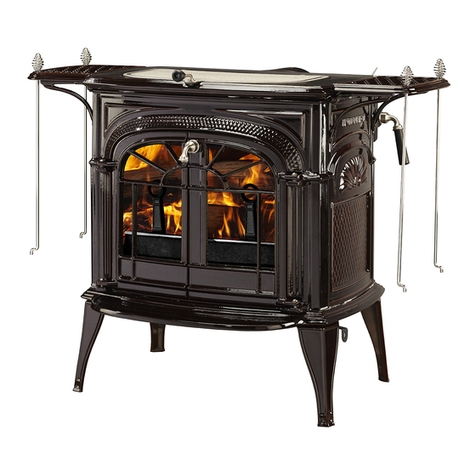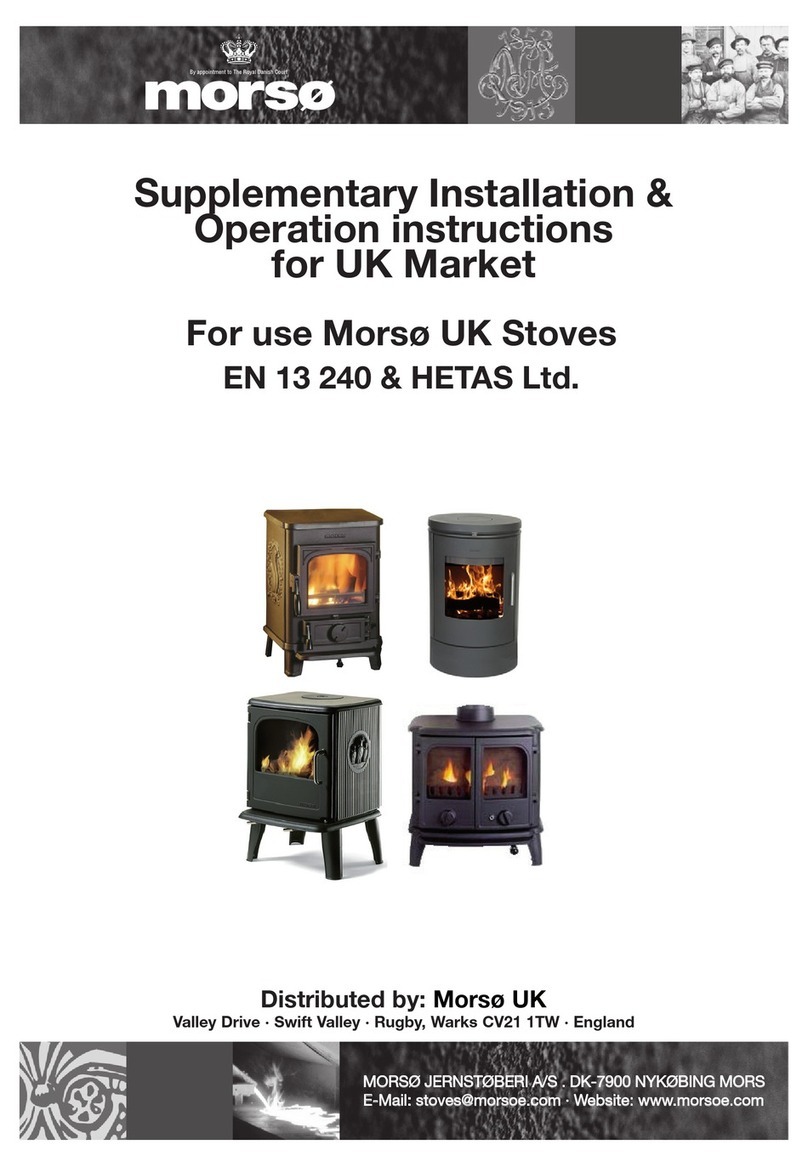Controlling the burning rate
When operating the stove with solid fuels the combustion air supply should be predominantly controlled
by the primary air intake. The primary air on many of the stoves is controlled by an air spinner on the
ash door or on the bottom of the main door. In the case of the Morsø Owl 3410, 3440 and the Ø range
the primary air is controlled via a lever below the ash lip (please refer to main instructions)
Riddling and ash clearance
Riddling twice a day is usually sufficient. The fire should be riddled with all doors shut. Never allow ash
to accumulate in the ashpan such that it comes into contact with the underside of the grate as this will
cause it serious damage. The ashpan should be emptied regularly before it becomes too full. Use the
tool provided to remove the ashpan.
Care should be taken to ensure that any hot ash is cool before emptying it into plastic liners or bins.
Refuelling
Keep the firebox well filled, the fuel may be sloped up from the front fire bars toward the back of the
stove but do not allow fuel to spill over the top of the front fire bars or restrict any tertiary air inlets.
Take care that fuel does not project over the front fire bars or damage to the glass may be caused.
Empty the ashpan, if required, and then riddle the fire. If the fire is very low then it may be necessary to
add a small amount of fuel and adjust the air control to maximum for a brief period until the fire is
burning well before fully re-fuelling the stove. After refuelling continue to operate the stove at full rate
for a short time before reducing the air controls for overnight burning.
Reduced or overnight burning
Some experimentation may be necessary to find the air control setting most suitable for the particular
fuel used and the draw on the chimney and the level of heat output required, but generally the air
control should be turned down to the minimum setting for overnight burning. Please note some sooty
deposits or discolouration to the glass may occur when the stove is slumbered overnight. This should
clear once the fire is restored to a good operating temperature. It may also be necessary to periodically
clean the glass; Morsø glass cleaner is available from your dealer.
To revive the fire, empty the ashpan if necessary, riddle, and turn the air control setting to maximum.
When the fire is burning well load on more fuel as necessary and turn the air control setting to the
desired setting.
Flueway cleaning
It is important that the baffle plate and all the stove flueways are kept clean. When burning smokeless fuels
they should be inspected and cleaned at least once a month.
More soot will be deposited on the baffle plate and in the flueways if the stove is run at low levels for long
periods. If this is the case then more frequent cleaning will be necessary.
Cleaning and Maintenance
Please see “Routine Stove Maintenance” contained in the main instruction manual.
Trouble shooting, tips & hints
1. Glass discolouration
Check that:
•If wood burning, the moisture content is not too high.
•If wood burning, the logs are not oversized (logs greater
than 100mm diameter should be split).
•If wood burning, the combustion air is supplied via
the secondary air control.
•If burning solid fuel, an approved fuel is being used.
2. Glass cracking
Check that:
•A quality approved fuel is being used without
impurities. Impurities sometimescalled “stones” can
explode inside the firebox and damage the glass.
•If the glass has recently been replaced, ensure it
is authorisedMorsø glass. Morsø use
only 5mm thick glass, it is false economy to use inferior 3 or 4mm replacement glass.
•If the glass cracked when the stove was not
being used: there are likely to be signs of
corrosion on the door frame behind the glass. When the stove
is out of use for prolonged periods it is important to remove any ashes and vent the
stove. Differences in room, flue, and stove body temperature can result in condensation inside
the stove; if this moisture comes into contact with any ashes or gaskets it may result in corrosion
and acid corrosion from the ashes. Rust behind the glass will push the glass away from the door
frame plac- ing pressure on the glass at the fixing points; the resulting crack usually runs from
clip to clip.
3. Ceramic glass replacement
Ceramic glass cannot be recycled because it has a higher melting point that ordinary glass. If ceramic
glass is mixed with ordinary glass, the raw material is spoiled, and the reclaiming process may be halted.
Take care that the ovenproof glass does not end up among ordinary recycled waste. That will be a great
benefit to the environment. Note: Should be handed in to a recycling station as ceramic glass.
4. Fire Will Not Burn
Check that:
•If wood burning, the moisture content is not too high.
•If wood burning, the logs are not oversized (logs greater
than 100mm diameter should be split).
•The correct air control is being used for the
fuel being burnt, i.e. Primary air for solid fuel
and secondary air for wood burning.
•The air inlet is not obstructedin any way.
•That the chimneys and flueways are clear.
•That there is an adequate air supply into the
room.

